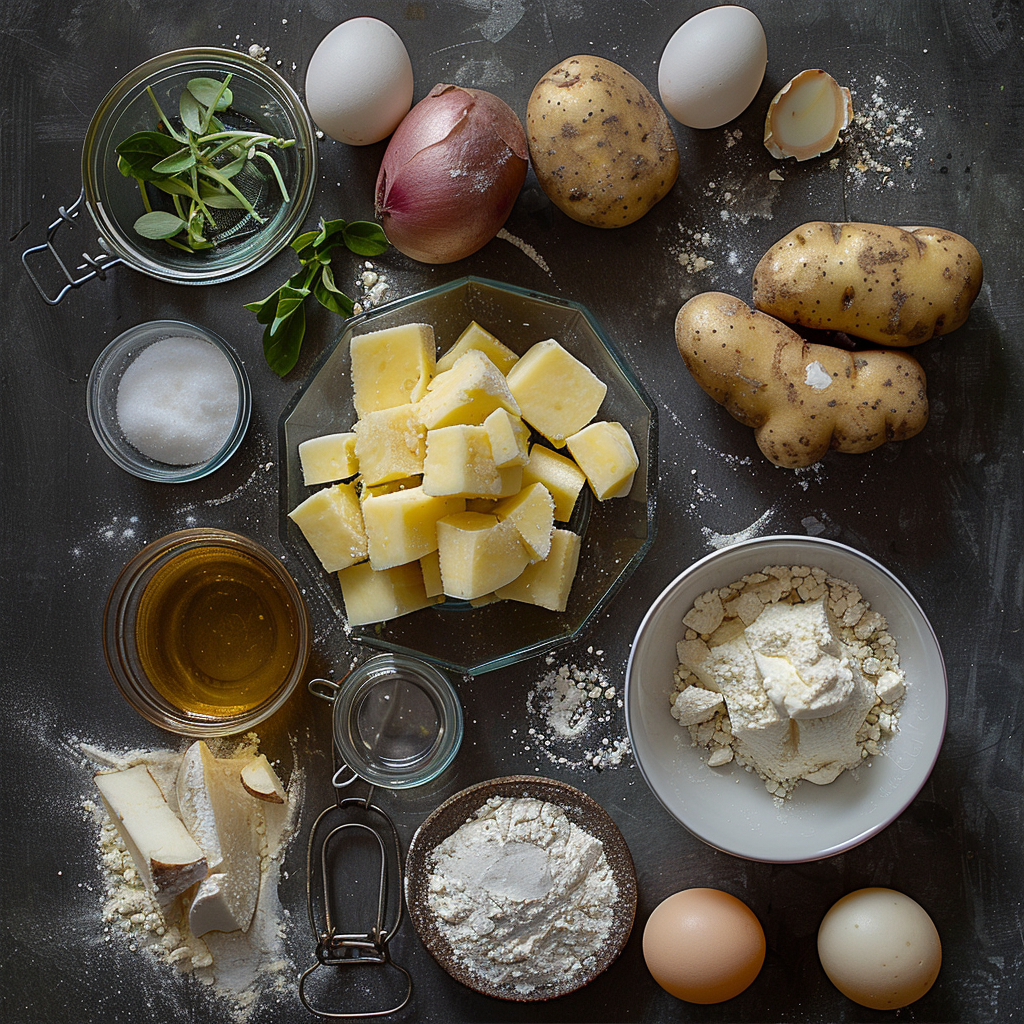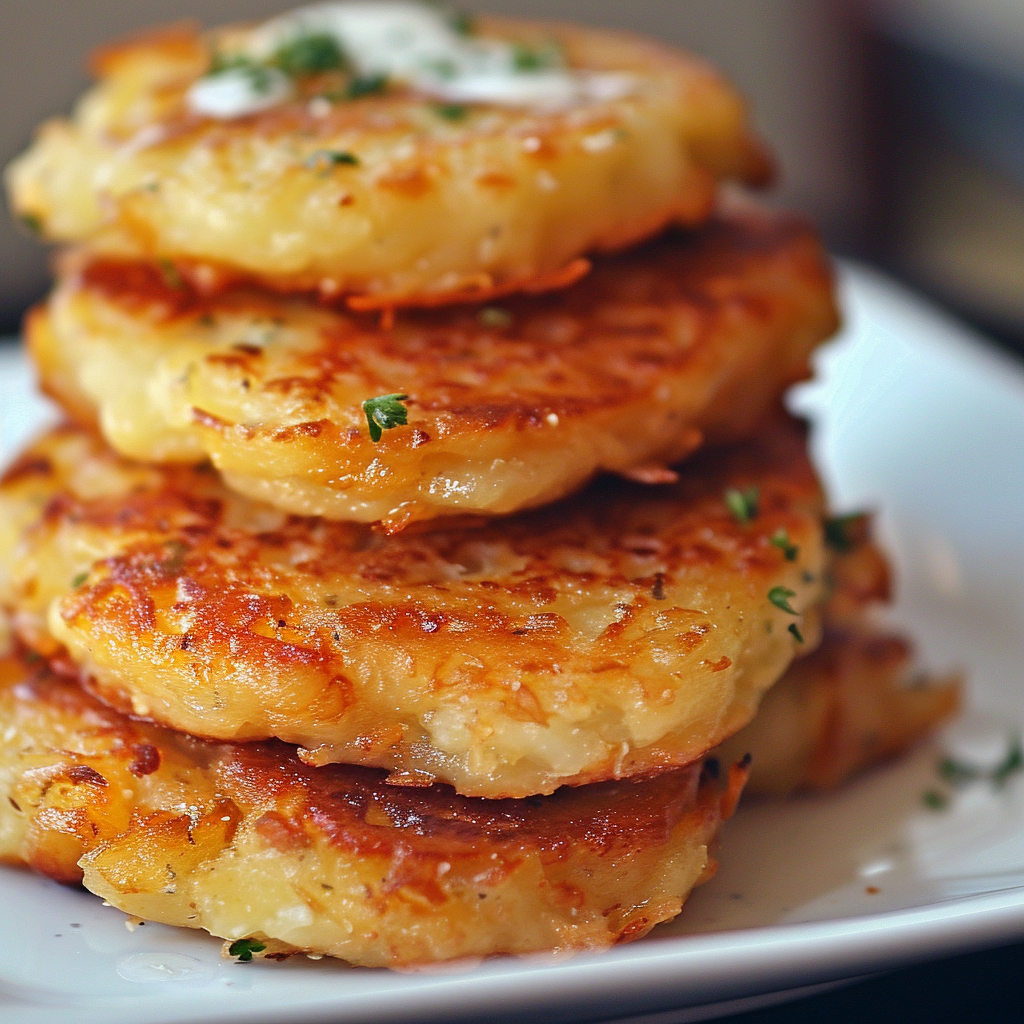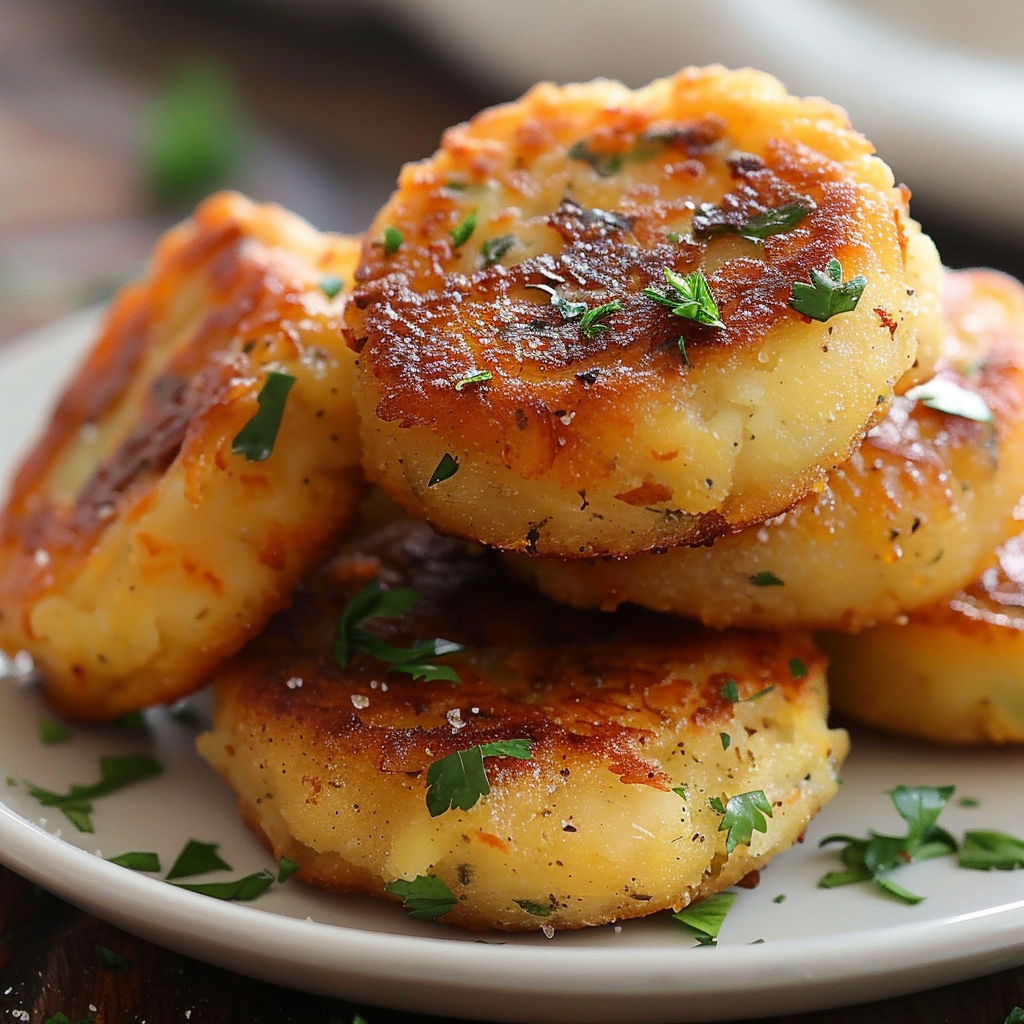Potato cakes are a versatile and satisfying dish that appeals to just about everyone. Whether you’re serving them for breakfast, lunch, or dinner, or as a snack with a savory dip, these golden, crispy patties can be customized to your taste buds. In this guide, we’ll delve into the details of how to make potato cakes perfectly every time. From understanding the best ingredients and techniques to creative serving suggestions, you’ll be a pro by the end of this read.
The Basics: Understanding Potato Cakes
Potato cakes are a simple, versatile dish enjoyed across various cuisines. They can be made from mashed, grated, or sliced potatoes and cooked in various ways. The appeal of potato cakes lies in their adaptability and their ability to pair well with numerous ingredients.
History of Potato Cakes
The history of potato cakes is deeply rooted in the global journey of the humble potato itself. Introduced to Europe from the Americas in the 16th century, potatoes quickly became a staple food, thanks to their affordability and ease of cultivation. Potato cakes emerged as a creative way to utilize potatoes, often combined with flour, eggs, and seasonings to form an inexpensive yet filling meal.
In Ireland, for example, boxty (Irish potato pancakes) became popular, made with both grated raw and mashed potatoes. In Scotland, tattie scones are a traditional addition to a hearty breakfast. Meanwhile, in Jewish cuisine, latkes, a type of potato pancake, are central to Hanukkah celebrations.
Types of Potato Cakes
Potato cakes come in a wide range of variations, depending on the region and available ingredients. Some are prepared with finely grated potatoes, while others use mashed or cooked potato slices. Here are a couple of notable types:
Traditional Potato Cakes
- Boxty (Ireland): A blend of raw grated and mashed potatoes, mixed with flour and buttermilk. It’s fried or baked and is a staple of Irish cuisine.
- Latkes (Jewish): Made with grated potatoes mixed with eggs and flour. These are fried until crisp and traditionally served with sour cream or applesauce.
Modern Potato Cake Variations
- Potato Rosti (Switzerland): A Swiss variation that uses coarsely grated potatoes, often seasoned with herbs and cooked in a skillet until crispy and golden-brown on both sides.
- Vegan/GF Potato Cakes: More recently, variations have emerged that accommodate specific dietary needs, such as using gluten-free flours and plant-based egg substitutes for those following vegan or gluten-free diets.
Potato cakes continue to evolve as new ingredients and cooking techniques are explored, making them a creative culinary canvas that offers something for everyone.
Choosing Ingredients for Your Potato Cakes

When it comes to creating the perfect potato cakes, choosing the right ingredients is key. Each component plays a vital role in achieving the desired texture and flavor.
Potatoes: Which Variety to Use
Not all potatoes are created equal when it comes to potato cakes. Your choice will significantly influence the texture and structure.
- Russet Potatoes: Known for their high starch content and low moisture, russet potatoes are ideal for achieving a crisp exterior. They mash well, making them suitable for smooth potato cakes.
- Yukon Gold Potatoes: These have a medium starch content and a buttery flavor. They hold their shape better than russets, making them perfect for grated or chunky styles.
- Waxy Potatoes: Varieties like red or new potatoes have a lower starch content and retain their shape when boiled or fried. They work best for coarser, shredded potato cakes.
Other Essential Ingredients
In addition to potatoes, a few other ingredients are essential for binding and flavoring your potato cakes.
Eggs and Binding Agents
Eggs are often used as a binder, helping the potato mixture hold together while cooking. In vegan recipes, substitutes like flaxseed meal or chia seeds can provide similar results. Flour or breadcrumbs are sometimes used to add structure and prevent the mixture from falling apart.
Seasonings and Aromatics
To infuse flavor into your potato cakes, don’t forget the seasonings and aromatics. Some popular choices include:
- Onions/Scallions: Finely diced onions or scallions can add a sweet or sharp note.
- Garlic: Minced garlic provides a robust, savory flavor.
- Herbs and Spices: Fresh herbs like parsley, dill, or chives add brightness. Spices like paprika, cumin, and cayenne can bring a unique twist.
With these ingredients, you can create a potato cake mixture that perfectly matches your taste preferences.
Essential Kitchen Tools
To make perfect potato cakes, it’s helpful to have some essential kitchen tools at hand.
Graters and Mashers
- Graters: A box grater or food processor with a shredding blade will make quick work of grating potatoes for a finely textured potato cake.
- Mashers: For a smoother consistency, a potato masher or ricer will create a fluffy mashed base.
Frying Pans and Baking Trays
- Frying Pans: Choose a sturdy non-stick or cast-iron skillet for frying. Cast iron provides even heat distribution, ensuring the cakes are browned uniformly.
- Baking Trays: For healthier baked cakes, a baking tray lined with parchment or a silicone mat will help prevent sticking and facilitate easy cleanup.
How to Make Potato Cakes: Step-by-Step Instructions

Creating delicious potato cakes involves several steps, each contributing to the flavor and texture.
1-Preparing the Potatoes
Peel (optional): If desired, peel the potatoes before processing.
- Grate or Mash: Grate for coarser, shredded cakes, or mash for a smoother consistency.
- Remove Excess Water: If using grated potatoes, squeeze out excess moisture with a kitchen towel or cheesecloth. For mashed potatoes, ensure they’re not too wet by draining well.
2-Mixing Ingredients
- Combine: Mix the grated or mashed potatoes with binding agents like eggs, flour, or breadcrumbs.
- Add Seasonings: Incorporate your chosen aromatics (onions, garlic, herbs) and season with salt, pepper, and spices.
3-Shaping and Forming
- Portion: Use a scoop or spoon to take small portions of the mixture.
- Shape: Shape each portion into patties of uniform size. Wet your hands slightly to prevent sticking.
4-Cooking Methods
Frying for Crispiness
- Preheat Pan: Heat oil in the skillet over medium-high heat.
- Cook Patties: Add the patties and fry until golden and crispy, about 3-4 minutes per side. Set them on a paper towel to absorb the extra oil.
Baking for Health
- Preheat Oven: Set the oven to 400°F (200°C) and line a baking tray with parchment paper.
- Arrange Patties: Place the patties on the tray, brush lightly with oil, and bake for 15-20 minutes, flipping halfway through, until golden and crisp.
These steps will help you make delicious potato cakes, whether you prefer them pan-fried or baked. Enjoy them with your favorite condiments or as a side dish.
Tips and Tricks for Perfect Potato Cakes
Mastering potato cakes involves a few helpful tricks to ensure they turn out perfectly every time. Here are some expert tips to guide you.
Preventing Soggy Cakes
- Drain Grated Potatoes: If using grated potatoes, make sure to squeeze out excess moisture with a kitchen towel or cheesecloth.
- Cook Off Moisture: If using mashed potatoes, let them steam off moisture after cooking or reheating before mixing with other ingredients.
- Right Oil Temperature: Frying in oil that isn’t hot enough can cause the cakes to soak up excess oil and become soggy. Heat oil to around 350°F (175°C) before frying.
Achieving Ideal Consistency
- Use Binding Agents: Eggs, flour, or breadcrumbs bind the mixture together and help prevent the cakes from falling apart.
- Balance Dry and Wet: Aim for a mixture that isn’t too wet or too dry. If it’s crumbly, add a bit of egg or milk. If too wet, add flour or breadcrumbs.
- Uniform Patties: Shape the patties evenly so they cook at the same rate. Wet your hands before shaping to prevent sticking.
Flavor Variations
- Add Cheese: Incorporate grated cheese like cheddar, parmesan, or feta for a richer flavor.
- Include Vegetables: Finely chopped vegetables, like spinach, peppers, or zucchini, can add texture and flavor.
- Spices and Herbs: Experiment with spices such as paprika, cumin, or chili powder for a bolder taste. Fresh herbs like parsley, cilantro, or dill provide a burst of freshness.
By keeping these tips and tricks in mind, you’ll be able to create delicious potato cakes with the perfect texture and flavor profile.
Serving Suggestions
Potato cakes are versatile and can be enjoyed at any time of the day, whether as a main dish or a side. Here are some ideas for serving them.
Breakfast Ideas
- Classic Breakfast Plate: Pair potato cakes with fried or scrambled eggs, bacon or sausages, and toast for a hearty breakfast.
- Avocado and Salmon: Top the cakes with mashed avocado, smoked salmon, and a poached egg for a delicious brunch twist.
- Vegetarian Breakfast: Serve with sautéed mushrooms, grilled tomatoes, and wilted spinach for a wholesome, veggie-filled meal.
Lunch and Dinner Pairings
- Protein Companion: Use potato cakes as a side to roasted or grilled chicken, steak, or fish for a filling meal.
- Salad and Potato Cakes: Serve alongside a crisp green salad for a light yet satisfying lunch.
- Hearty Bowl: Combine with roasted vegetables, a poached egg, and your favorite grains in a hearty grain bowl.
Dips and Sauces
Sour Cream or Greek Yogurt: Classic accompaniments that balance the richness of the potato cakes.
- Applesauce: Sweet applesauce complements savory potato cakes and is often served with latkes.
- Herb Mayo: Mix mayonnaise with fresh herbs like dill, parsley, or chives for a refreshing dip.
- Spicy Sauces: Add a kick with hot sauce, sriracha, or a creamy chipotle dressing.
These serving suggestions offer plenty of creative ways to enjoy potato cakes, enhancing their flavors and making each meal memorable.
FAQs About How to Make Potato Cakes
What is potato cake batter made of?
Potato cake batter typically consists of grated or mashed potatoes combined with binding agents like eggs, flour, or breadcrumbs. Other ingredients may include onions, garlic, herbs, and seasonings to enhance flavor. The specific ingredients vary depending on the type of potato cake and personal preferences.
Why do my potato cakes fall apart?
Potato cakes might fall apart if the batter lacks sufficient binding agents or contains too much moisture. Adding more eggs or flour can help bind the mixture together. If using grated potatoes, ensure excess moisture is squeezed out before mixing. Also, ensure your skillet or baking tray is properly preheated, which helps create a crispy crust that holds the cake together.
Why are my potato cakes not sticking together?
If your potato cakes are not sticking together, it could be due to a lack of binding agents or an improper balance between wet and dry ingredients. Add an extra egg or more flour/breadcrumbs if the mixture feels too loose. Alternatively, if the mixture feels too dry, try adding a splash of milk or water.
What do Americans call potato cakes?
In the United States, potato cakes are often referred to as hash browns, potato pancakes, or sometimes latkes. Hash browns usually consist of shredded potatoes fried into a crispy patty, while potato pancakes and latkes are made with grated or mashed potatoes, eggs, and flour. The terminology can vary based on regional and cultural influences.
Conclusion: Your Potato Cake Adventure Begins!

Creating the perfect potato cake is a delightful journey of experimentation and discovery. Whether you prefer them crispy and fried or light and baked, there are countless ways to customize this humble dish. Choose your favorite potatoes, mix in aromatic herbs and spices, and decide on your ideal cooking method to make a batch that suits your taste buds.
Remember the tips and tricks for achieving the perfect consistency and flavor while exploring creative serving ideas. Let your potato cake adventure begin, and enjoy the rewards of this versatile comfort food as a side dish, main course, or snack at any time of day!

2 thoughts on “How to Make Potato Cakes Like a Pro”